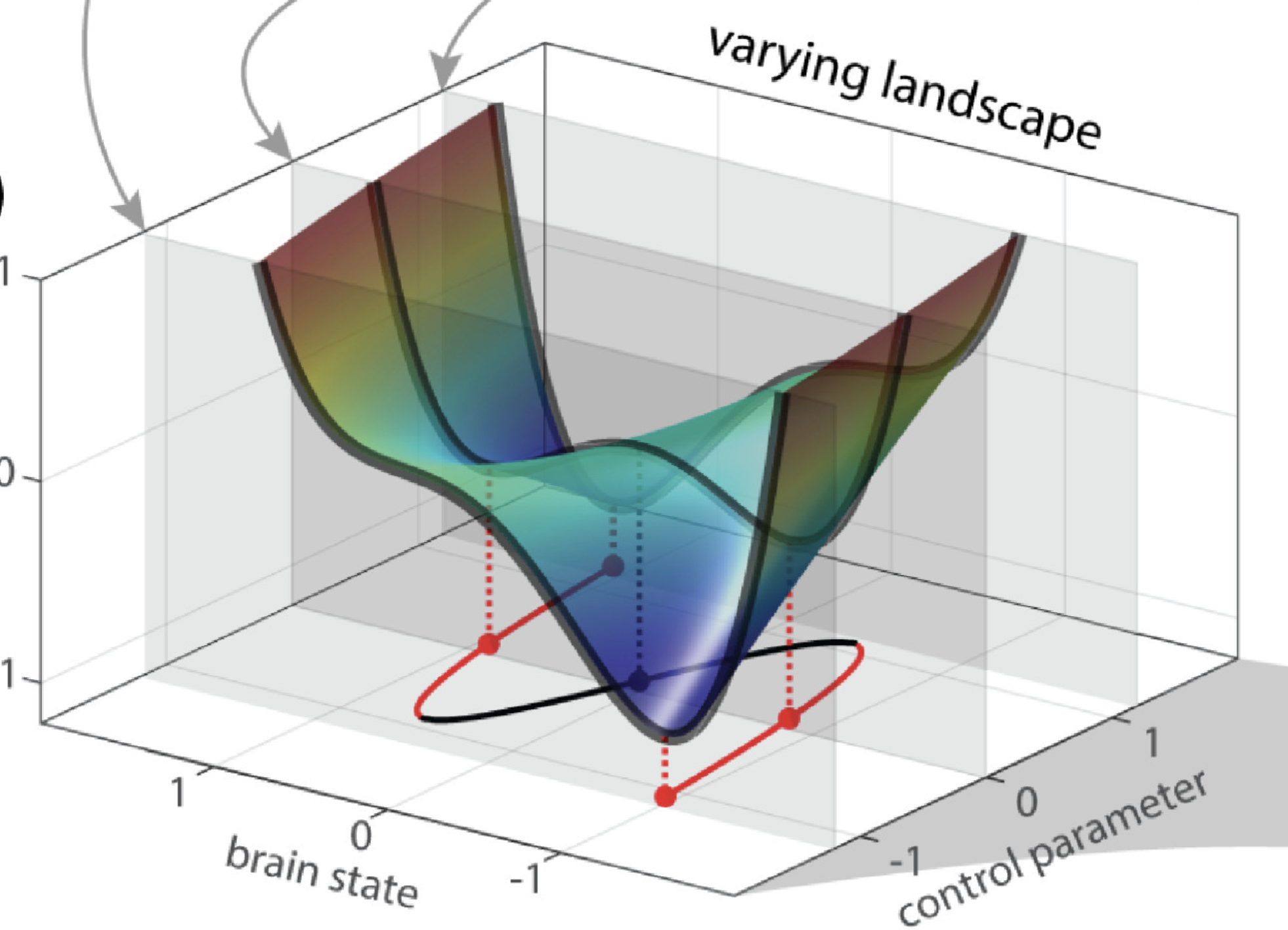Abstract
The brain exhibits complex intrinsic dynamics, i.e., spontaneously arising activity patterns without any external inputs or tasks. Such intrinsic dynamics and their alteration are thought to play crucial roles in typical as well as atypical cognitive functioning. Linking the ever-changing intrinsic dynamics to the rather static anatomy is a challenging endeavor. Dynamical systems models are important tools for understanding how structure and function are linked in the brain. Here, we provide a novel modeling framework to examine how functional connectivity depends on structural connectivity in the brain. Existing modeling frameworks typically focus on noise-driven (or stochastic) dynamics near a single attractor. Complementing existing approaches, we examine deterministic features of the distribution of attractors, in particular, how regional states are correlated across all attractors – cross-attractor coordination. We found that cross-attractor coordination between brain regions better predicts human functional connectivity than noise-driven single-attractor dynamics. Importantly, cross-attractor coordination better accounts for the nonlinear dependency of functional connectivity on structural connectivity. Our findings suggest that functional connectivity patterns in the brain may reflect transitions between attractors, which impose an energy cost. The framework may be used to predict transitions and energy costs associated with experimental or clinical interventions.
